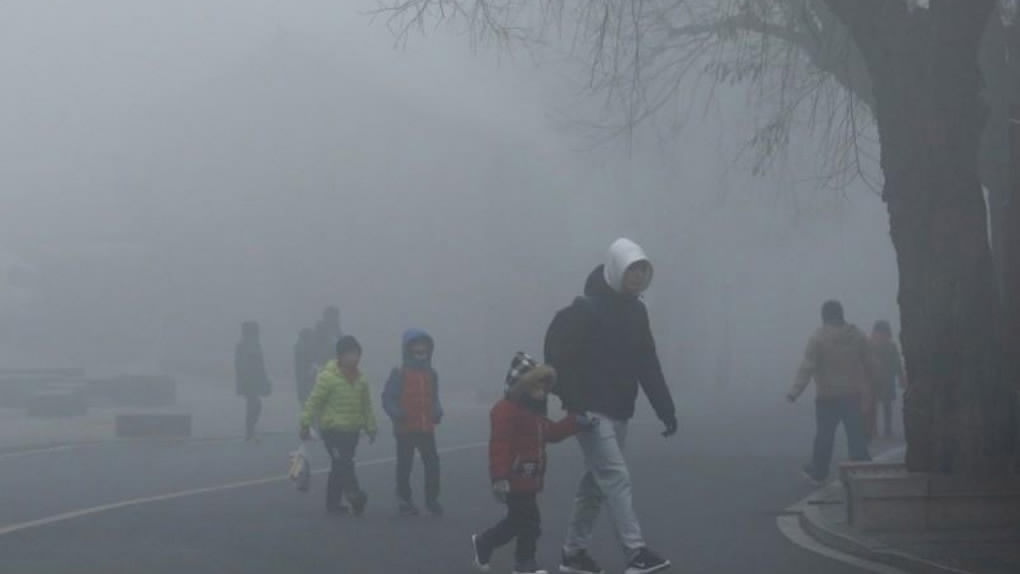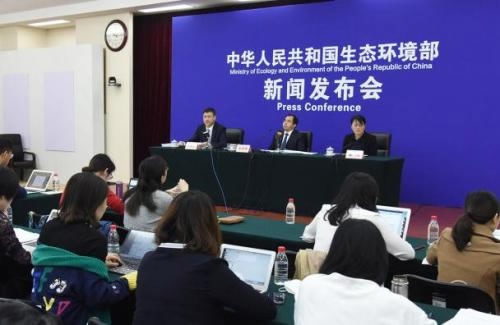
Pollution
20:48, 29-Mar-2018
China targets nine million pollution sources in 2nd national census
By Meng Qingsheng

China is conducting a second nationwide survey on pollution sources, announced the newly formed Ministry of Ecology and Environment (MEE) during a press conference held Thursday.
The three-year environmental census is aimed at identifying pollution threats throughout the country, and China is set to target an estimated nine million polluting units. With the first one being published in 2010 and the second now in its final year, the survey targets more than seven million industrial sources.
Hong Yaxiong, director of the office of the second China pollution source census, told the media that the survey also covers one million agricultural sources, half a million domestic sources, as well as concentrated pollution treatment facilities.
“The goal for the census is to do thorough data collection so that it can reflect the extent of the pollution,” Hong said at the first regular briefing since the beefed-up ministry was created this month.
"One principle to conduct the census is to determine the types of pollutants, based on local environment quality. And then we will trace back to the specific pollution source, and evaluate the level of damage to the environment, as well as the amount of pollutant discharge," he explained.
To ensure an accurate and reliable results, 600,000 specialized personnel take part in data collection and analysis. Remote sensing satellites, drones and portable electronic devices have also facilitated data collection.
The results of the first national pollution census, published in 2010, discovered that agricultural pollution was having a major effect on water supplies, prompting clean-up efforts in rural areas.

The first regular briefing held in Beijing /MEE Photo
The first regular briefing held in Beijing /MEE Photo
The environment ministry absorbed new duties formerly held by the land, water and agriculture ministries as part of the biggest government shake-up in years. It is also in charge of climate change and carbon emissions.
The 2nd round will be completed in 2019. According to preliminary estimates, the total number of pollution sources stands at nine million, of which 7.4 million are industrial, one million in rural areas, and 0.5 million from urban locations, Hong said.
The first census conducted by the National Bureau of Statistics from 2007 to 2009, uncovered 5.9 million sources of pollution nationwide, with the industrial provinces of Guangdong, Jiangsu and Zhejiang atop the list.
The survey also identified 209.8 billion tons of waste water, 63.7 trillion cubic meters of waste gas emissions and 3.852 billion tonnes of industrial solid waste.
Started last year, the second census has widened its scope to include industrial parks, rural pollution sources, boilers, municipal and waste water outlets, and also investigated soil pollution sources such as mercury, cadmium and lead.
The spokesman for the MEE also said that several officials in the provinces including Yunnan, Jiangxi, and Hunan have been punished for tampering with pollution monitoring equipment for reducing smog readings. Some of them reduced emissions readings by spraying water on their air quality sensors.
The ministry expressed to maintain a tougher hand on behaviors disrupting normal operations of air quality monitoring.
(With inputs from Reuters)
1km
Source(s): Reuters

SITEMAP
Copyright © 2018 CGTN. Beijing ICP prepared NO.16065310-3
Copyright © 2018 CGTN. Beijing ICP prepared NO.16065310-3